Posted on May 14, 2012 under Archives, Italy |
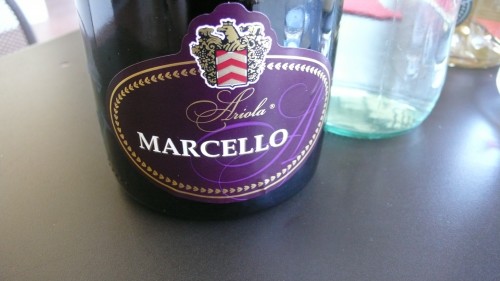
Ariola winery
After an informative and fascinating tour of Parmigiano-Reggiano cheese and Parma ham factories, my good foodie friend Andrea Aiolfi from Food Valley Gourmet Tours drove me to the Ariola Winery in Langhirano in the province of Parma.
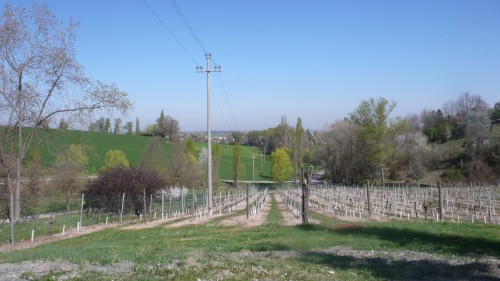
vineyards
The vineyards at this winery lie on the rolling hills overlooking the Po Valley. Andrea brings guests of his Parma food tour here to sample the wonderful wines and also the cheese and ham created at the factories visited during the tour.
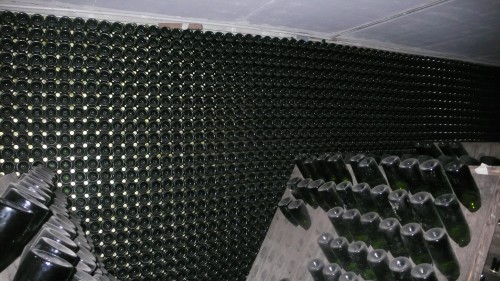
lots of wine
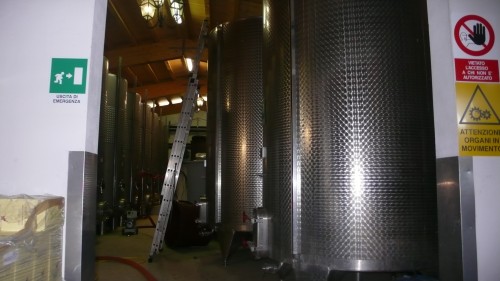
fermenting wine
Here is a sampling of what we shared for lunch, with plenty of sparkling lambrusco and good conversation about food.
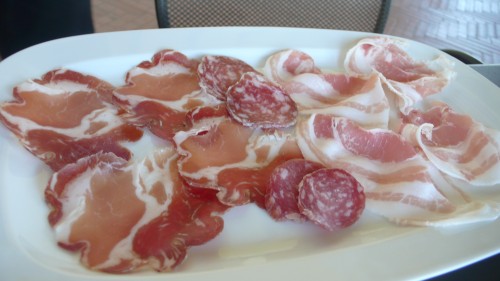
salami plate
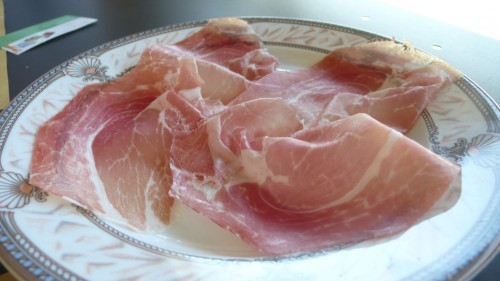
parma ham
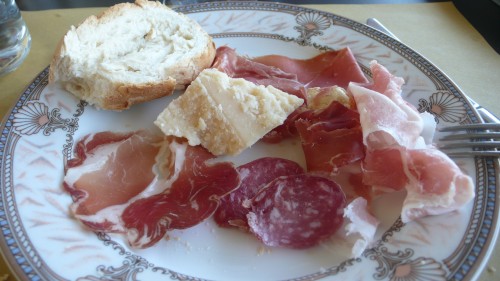
my plate of food
We started with a plate of mixed salami and cheese and ham from the factories we visited. Andrea showed me how Italians enjoy their Parma ham.
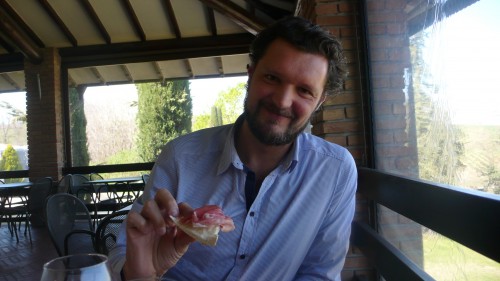
Andrea enjoying his Parma ham
We also enjoyed some of the Ariola’s great sparkling wines.
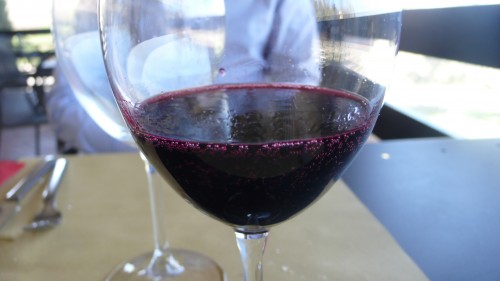
red sparkling wine
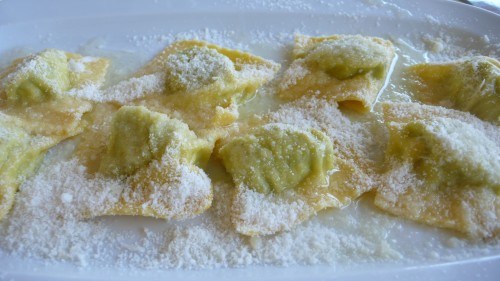
ravioli with cheese and herbs
We also enjoyed a lovely dish of ravioli with cheese and herbs. Delicious.
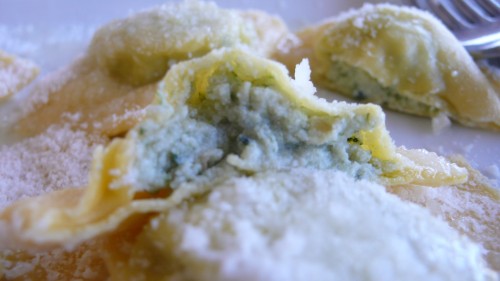
inside ravioli
The tour was one of the most memorable days of my trip. If interested in booking a tour with Food Valley Travel while in Parma or other areas of Emilia-Romagna, visit their website at www.foodvalleytravel.com.
Posted on May 11, 2012 under Archives, Italy |
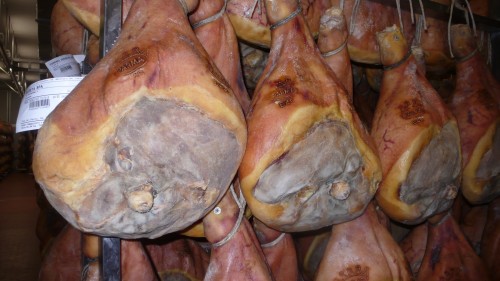
Parma ham
The second stop on my personal food tour with my friend Andrea Aiolfi from Food Valley Gourmet Tours was to the Conti Parma Ham factory in Parma. I got to see the entire process of how the Italians make this gold standard of ham.
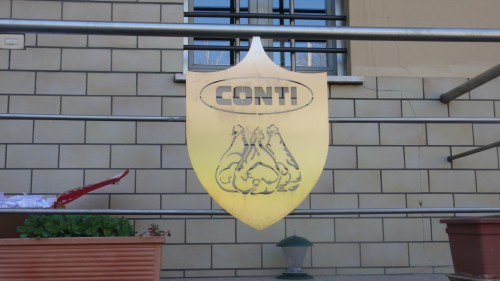
Conti Ham Factory
I learned that similar to the production of Parmigiano-Reggiano cheese, everything about the production of each ham can be traced to its beginnings on some 1,100 farms in north-central Italy. Each pig’s date of birth and the farm where it was raised are known. The details of its diet are specified, including grains and cereals and the whey that is drained off during the production of Parmigiano-Reggiano and given to the pigs to eat.
Each artisanal ham is an all-natural prime product from the province of Parma in the region of Emilia Romagna. The only ingredients used in production are pork, sea salt, air and time.
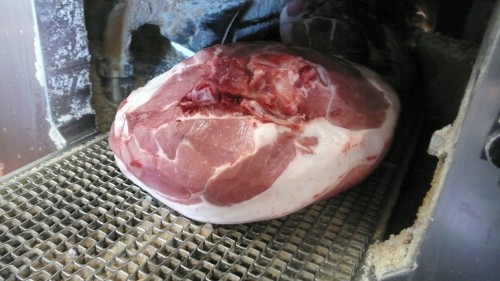
Raw ham
The ham arrives at the Conti factory and goes through a machine that massages it so it will be ready to be salted. Maestro salatores (salt masters) hand-rubs just the right amount of sea salt onto the ham ‘s surface to begin the long curing process.
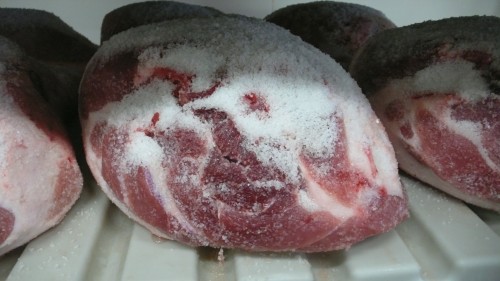
salted ham
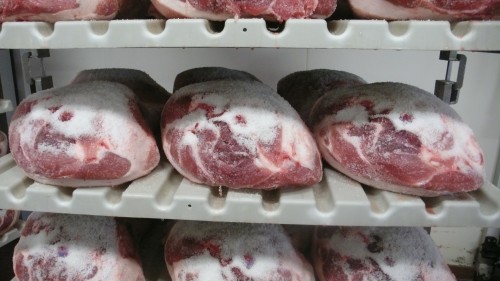
salted hams
The hams are moved to the hanging room after salting. During the first 100 days, temperature and humidity are carefully controlled in refrigerated curing rooms so that the meat absorbs just the right amount of salt.
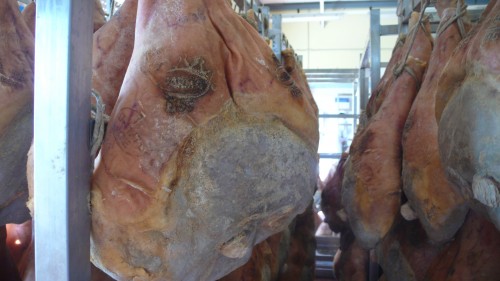
First 100 days
After that, the hams are rinsed, then spend the next four months hanging on floor-to-ceiling racks in large, airy rooms on the upper floors of the prosciuttificio. Windows are opened and closed during the right weather conditions so the Parma breezes will dry and cure the hams as well as impart their special flavor to them.
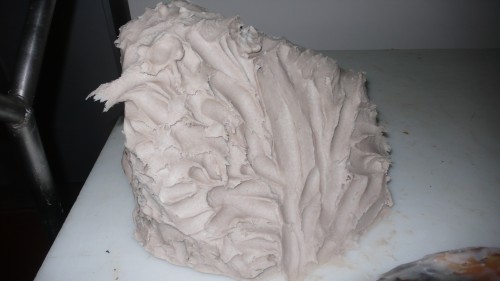
rub for ham
After four months, the exposed surfaces of the hams are hand-coated with a mixture of lard, salt and pepper to soften them and help control the rate of moisture loss. Then they’re transferred to cellars for the final phase of curing, which lasts at least five months.
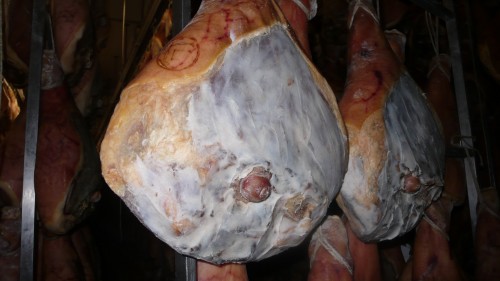
ham with rub
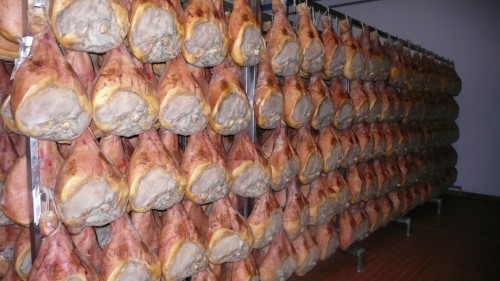
aging ham
Before they can be sold, however, inspectors from the Consorzio del prosciutto di Parma will perform la punctura (the puncturing).
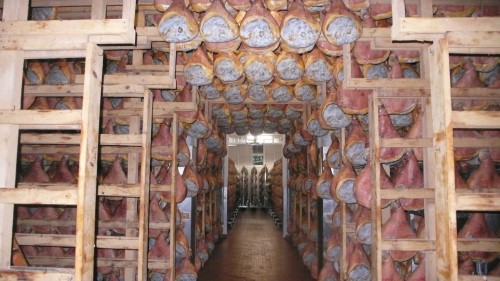
Look at all that delicious Parma ham!
Using specially fashioned bone needles, inspectors pierce each ham in five strategic places and then sniff the needles to be sure the scent or aroma of the ham is as it should be. If the ham measures up, it will be fire-branded with the distinctive stamp of a true Parma ham — a five-pointed ducal crown with ” Parma ” printed in its center.
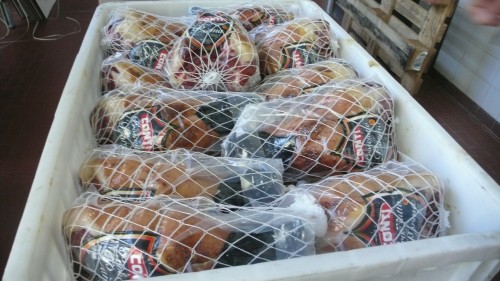
ready to ship
The ham is then packaged and is ready to ship all over the world. Andrea and I left the Conti factory and headed to a local winery where we got to sample some of this tasty ham.
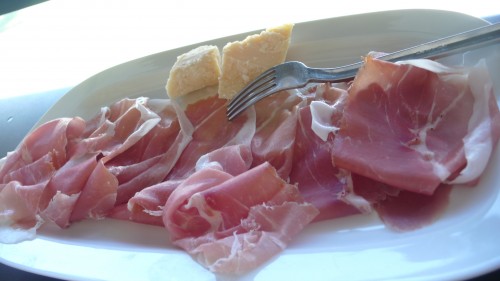
Finished Parma ham
My tour with Andrea also included the Parmigiano-Reggiano cheese factory. I highly recommend booking a food tour with Food Valley Gourmet Tours if you are traveling to Parma, reservations can be made on their website at www.foodvalleytravel.com.
Posted on May 01, 2012 under Archives, Italy |
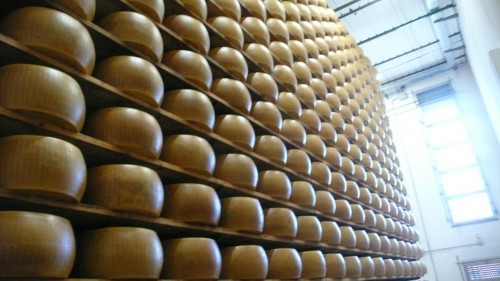
Parmigiano-Reggiano cheese
While in Parma last month, I met Andrea Aiolfi, head of Food Valley Gourmet Tours, who was nice enough to take me on a day long tour of a few of the many food factories in Parma. Our first stop was a Parmigiano-Reggiano Cheese Factory.
In making Parmigiano- Reggiano , cheesemakers in Parma follow a carefully controlled process that sets requirements on everything from feed for the dairy cattle to the aging of the cheese .
Before a cheese can be branded with the trademark, Parmigiano- Reggiano, the guarantee of quality, it must pass several inspections by experts with the Parmigiano- Reggiano Consortium, as well as the many observations made by workers at the factory as they handle the cheese during the brining, drying and aging.
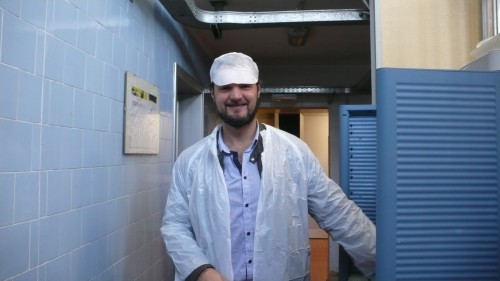
Andrea Aiolfi, my friend and owner of Food Valley Gourmet Tours in Parma
Andrea and his guides pick up travelers at their hotel and drive them to each factory. We started with the king of cheeses, Parmigiano-Reggiano, and had to suit up before entering the factory. We put on plastic coats, hats and covering for our shoes.
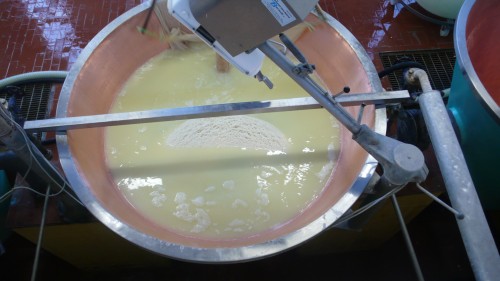
Cheese coming together in copper cauldron
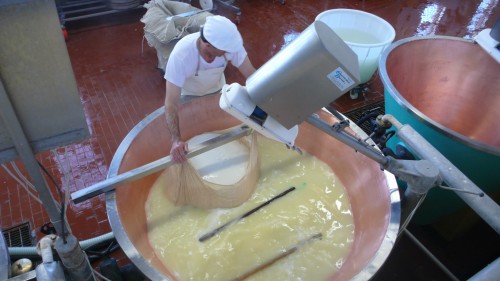
Making cheese
By Italian law, Parmigiano- Reggiano is produced only in a defined territory or zone in northern Italy, mostly in the Emilia Romagna region. The territory comprises the communes of Parma, Reggio Emilia and Modena, the part of Bologna on the left bank of the Reno River and the part of Mantua (in the Lombardy region) that is on the right bank of the Po River.
About 80 percent of the milk that yields Parmigiano- Reggiano comes from 200,000 Frisona Italiana – Italian Friesian – cows, with 1 percent from a breed called Rossa Reggiana, and the rest mostly from Brown Swiss.
The production of milk also is controlled and inspected by the cheese consortium. The cows are fed hay and grass.
Their milk is delivered twice a day to the cheese plant. An evening’s milk is poured into large stainless-steel pans and skimmed the next morning. Then the morning’s whole milk from the dairies is added to the skim milk, and both are piped into the large copper cauldrons. With the addition of rennet, a natural ingredient from calves, the milk is heated slowly until it reaches the proper temperature to form curds and maintain the correct softness. Nothing else is added.
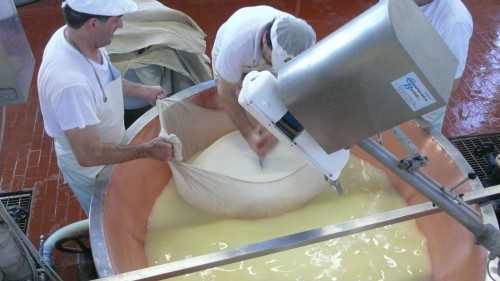
cutting the cheese into two sections
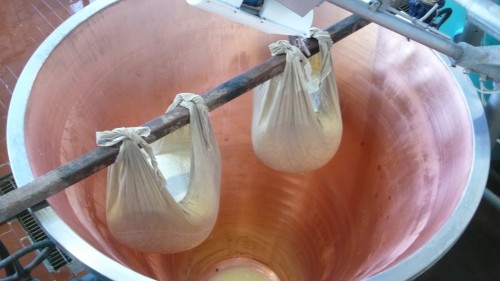
draining cheese
As the curds separate from the liquid, they are gathered into a mass, and a large cloth woven of linen and cotton is slipped under and around the mass of curds. The cloth is tied at two ends over a wooden pole that is placed across the top of the cauldron.
The cheese drains and each mass of cheese is divided with a special knife, and one of the halves is placed in a second cloth. Both halves are retied and suspended on the wooden pole across the copper pot. Two wheels of Parmigiano- Reggiano are the daily yield from each cauldron. The remaining curd is then gathered and can immediately be sold as fresh Ricotta.
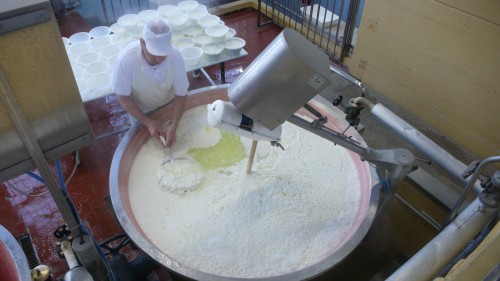
ricotta
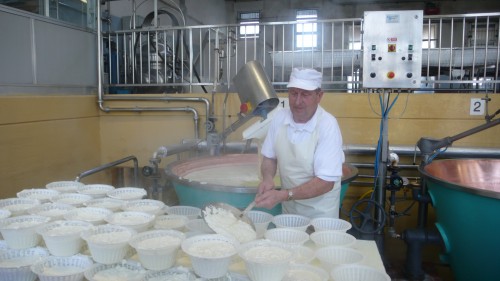
ricotta
This very young cheese is placed in molds lined with a matrix that presses the words “Parmigiano- Reggiano ” into what will be the rind around the girth of the wheel of cheese . The date and the dairy number are also pressed into the cheese.
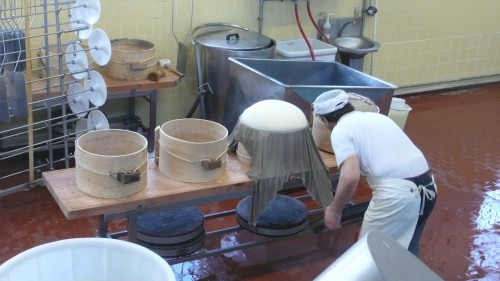
putting cheese in cases
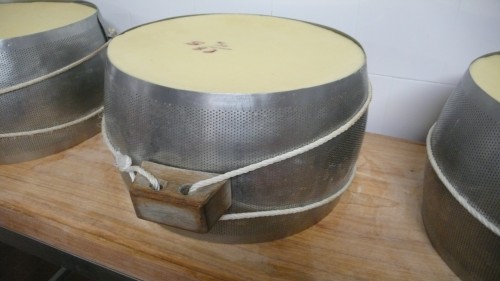
Cheese in mold
The cheeses stay in the molds two or three days before they are removed and placed in a brine of pure water and sea salt for three to four weeks.
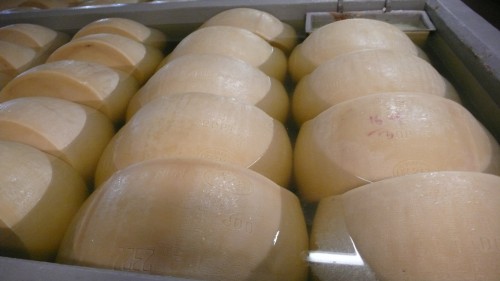
cheese in salt
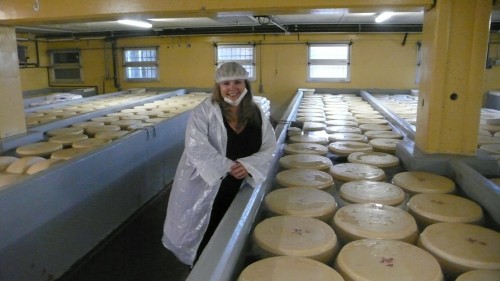
Watching over the cheese
After the brine bath, the cheeses go into storage and are placed on wooden shelves that reach to the ceiling of the aging room, where they are turned many times to prevent any spoilage to the cheese and damage to the wood. On these shelves, sometimes holding 200,000 cheeses , the Parmigiano-Regiano receives most of its inspections, such as thumping for solidity, visual observations and a coring sample.
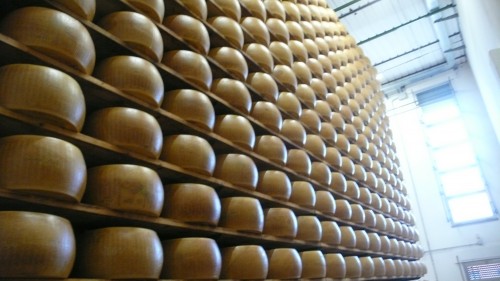
Look at all that cheese!
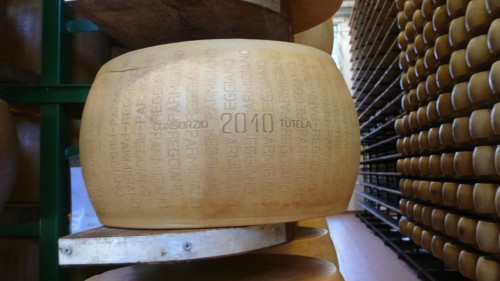
close up of wheel of cheese
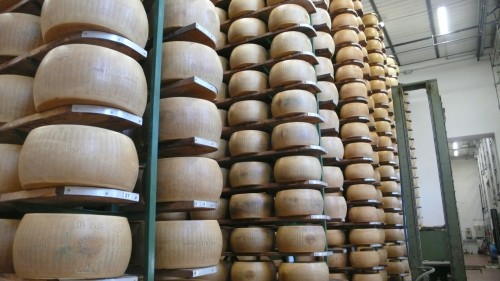
Aging cheese
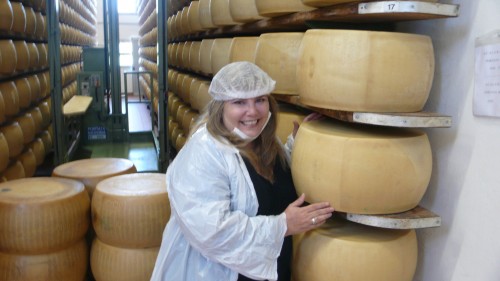
I picked out a nice wheel for myself
Most cheese factories have a selling room where visitors can buy ricotta, parmigiano-reggiano and other cheeses. The parmigiano-reggiano can be vacuum-sealed in heavy plastic enabling tourists to transport it and enjoy it at home. Prices usually range from $12 to $14 per kilo. We sampled a nice bunch of cheeses all aged from eighteen months to three years.
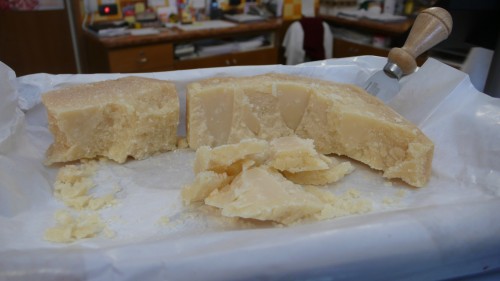
finished cheese to sample
To be labeled “export quality,” each cheese must be aged for a minimum of 18 months. Here are the kilos I purchased which I am now enjoying at home.
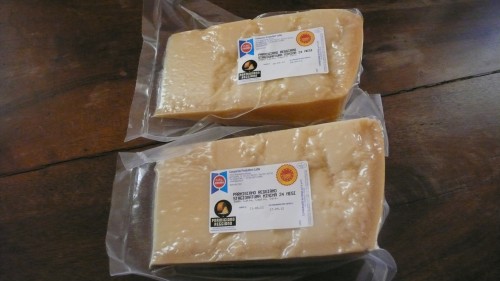
my cheese!
The parmigiano-reggiano cheese factory was just the first stop on my food tour with Andrea. I highly recommend booking a food tour with Food Valley Gourmet Tours if you are traveling to Parma, reservations can be made on their website at www.foodvalleytravel.com.
Posted on Apr 29, 2012 under Archives, Italy |
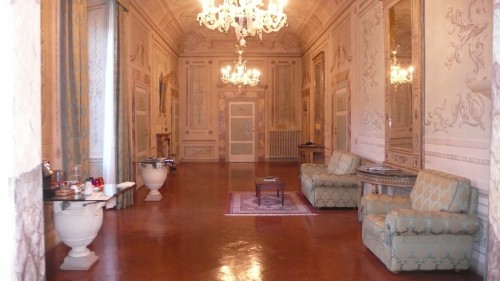
Palazzo Magnani Feroni
Located one block south of the Arno is the gorgeously grand Palazzo Magnani Feroni. I was lucky enough to stay at this 15th Century all suite former palace the last time I was in Florence. The large Renaissance resort houses marble stairways, huge elegant salons, stone fireplaces, original frescoes, antiques and silk and damask furnishings. Each of the 12 suites has huge sitting rooms and master bedrooms and private marble bathrooms.
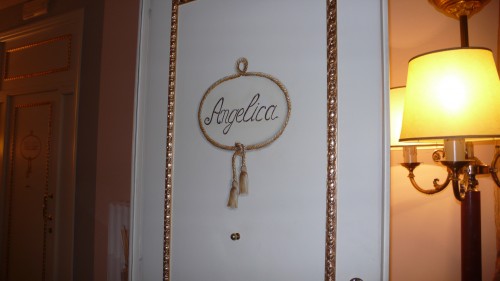
Angelica suite
I stayed in the Angelica suite which housed two televisions, antique furniture, a treadmill and a beautiful terrace.
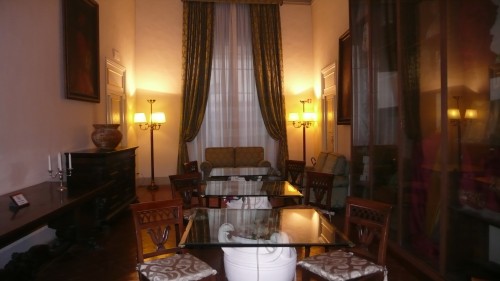
hallway entrance to room
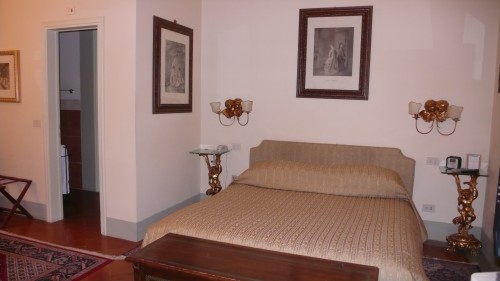
bedroom
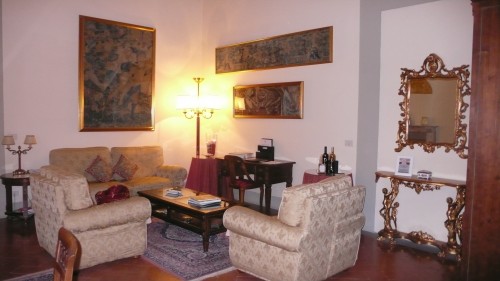
living room
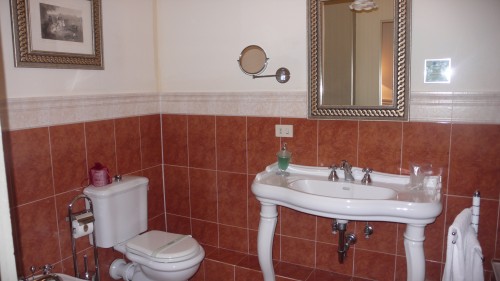
bathroom
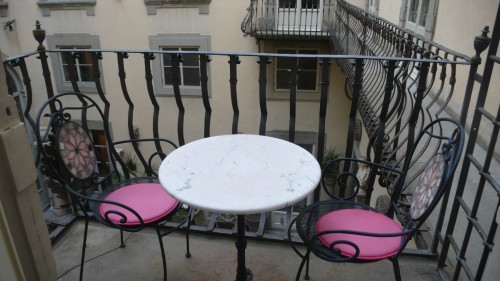
private terrace
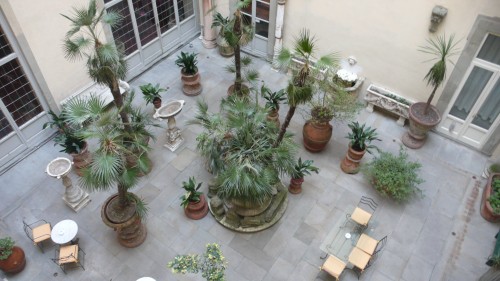
view from terrace
Throughout the resort are a maze of elegantly decorated rooms. The rooftop patio also offers sweeping views of Florence.
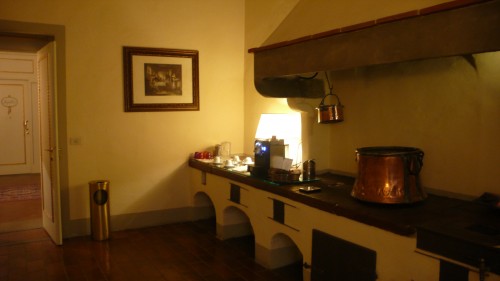
old kitchen
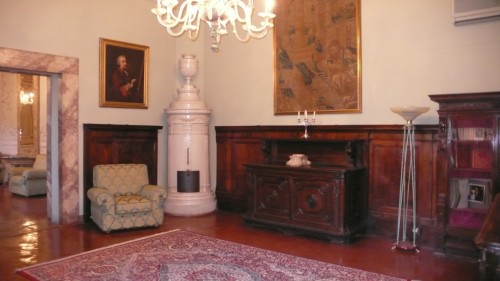
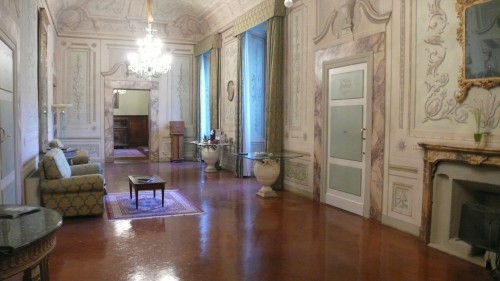
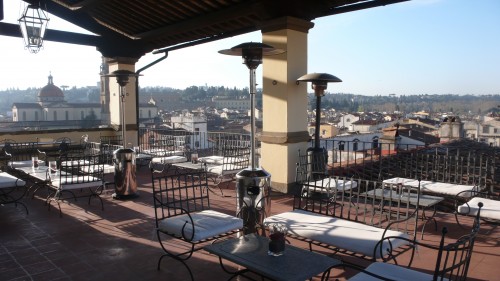
rooftop terrace
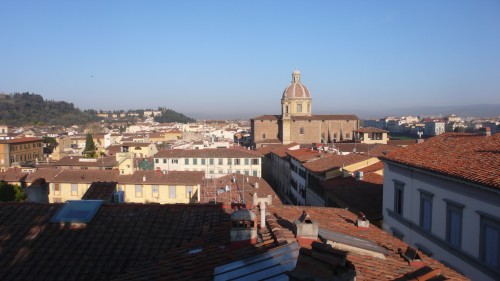
View from roof patio
The breakfast buffet is included in your stay. The breakfast room features an original Murano crystal chandelier and a coffered ceiling once housed in the Palazzo Farnese in Rome. The extensive buffet includes cheeses, eggs, cereal, meats, fruit and a variety of breads.
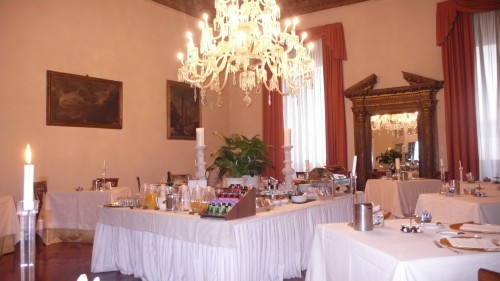
breakfast room
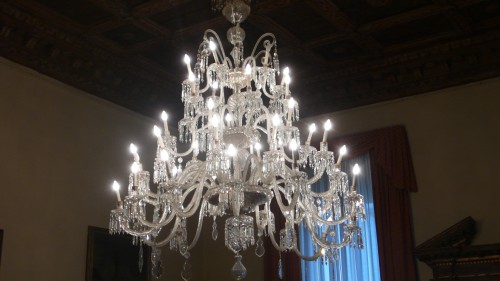
Murano crystal chandelier
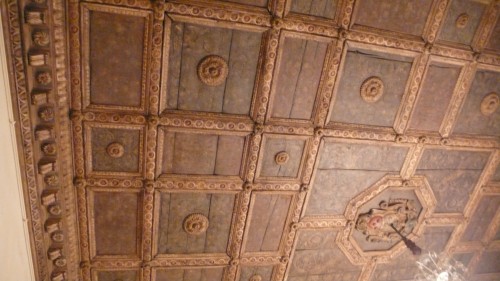
ceiling
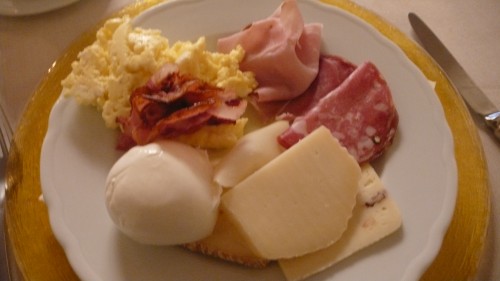
my plate
Situated close to the Ponte Vecchio, the Palazzo Magnani Feroni is the perfect place to stay for an elegant and romantic holiday in Florence. Located at Borgo San Frediano 5, reservations at 39 055 23 99 544 or through their website www.palazzomagnaniferoni.com.

























































